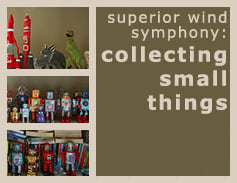 Kevin Rocheleau (Physics and Electrical Engineering) and Cody Trevillian (Physics and Plant Sciences) are among the performers for this weekend’s musical event, Collecting Small Things by the Superior Wind Symphony. The event takes place Saturday, November 14, 2015, at the Rozsa Center. You can also LISTEN LIVE online.
Kevin Rocheleau (Physics and Electrical Engineering) and Cody Trevillian (Physics and Plant Sciences) are among the performers for this weekend’s musical event, Collecting Small Things by the Superior Wind Symphony. The event takes place Saturday, November 14, 2015, at the Rozsa Center. You can also LISTEN LIVE online.
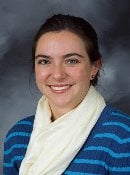
National Geographic quoted Michigan Tech graduate student Teresa Wilson (Physics) in an article about a special kind of atmospheric mirage known as a Fata Morgana.
China’s Floating City and The Science of Mirages
They’re common in polar regions, says Teresa Wilson, a graduate student in physics at Michigan Technological University in Houghton, in an email. “But [they] can happen anywhere.” People have even seen fata morgana in the Strait of Messina between Italy and Sicily.
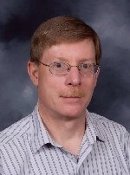
Physics Professor Bryan Suits is among the performers for this weekend’s event, the 4th Keweenaw String Festival or “Violapalooza.” The event takes place Saturday, October 10, 2015, at the Rozsa Center. You can also LISTEN LIVE online.
Moonbeam: Event draws crowd to Tech’s telescope
HOUGHTON – At Michigan Technological University, people lined up Sunday night to view an astronomical event that, for most of them, was occurring for the first time in their lives.
“A lot of people think that when the moon is eclipsed, it disappears during totality, but it doesn’t,” said Amanda Shaw, a masters student at Tech and teacher of Tech’s astronomy class, who organized the viewing.
“This is a rather unique event, but otherwise people don’t necessarily get a chance to see things like a full moon with any detail,” said Tech physics student Scott Rutterbush. “Instead, it gives them a little bit of perspective. It gives them a chance to say, ‘in order to see up close on the moon, we have to go this big.'”
Read more at the Mining Gazette, by Garrett Neese (subscription required).
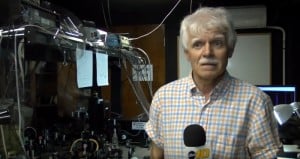
Local students will soon see big improvements in the physics department
Elizabeth and Richard Henes see great potential in Michigan Tech’s physics department. Five years ago, a Tech professor impressed them by using a mouse trap to demonstrate quantum mechanics.
“There are only certain states, like energy [or] velocity which are allowed for the molecule. A mouse trap has only 2 states. One when the spring is loose and one when it is, how do you call it, set. Mr. Henes said thank you for the lecture and handed us a check for seven hundred thousand dollars,” said Jacek Borysow, a Physics Professor at the University.
Read more and watch the video at ABC 10 UP, by Amanda L’Esperence.
Museum magazine published a special feature on NASA’s Astronomy Picture of the Day and interviewed Professor Robert Nemiroff (Physics), who co-developed and co-writes and edits the popular astronomy feature.
A special report on NASA’s Astronomy Picture of the Day archive—an image-driven attempt to catalogue (some) of the universe’s ephemera.
Existence is a loaded thing. Those of us who do not engage with the physical environment or, spiritually speaking, ritualistic practice, might wonder only briefly and in passing about that which we do not understand—the deep sea, impending apocalypse, where we come from—before shaking our heads and continuing onward.
MONICA USZEROWICZ As someone exploring the beginnings of the universe, what prompted your interest in the cosmos?
ROBERT NEMIROFF Like many scientists, in particular astronomers, I wanted to be a scientist from a very early age. I remember in second grade that I could say the names of the planets—then including Pluto—faster than anyone in the class. And that included—and I hope you are sitting down for this—the teacher. So obviously, I was pre-qualified to become an astronomer.
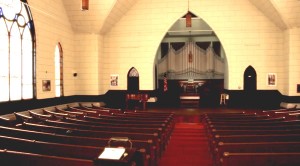
Two Faculty Members to Perform in Concert
New Chamber Music at the Calumet Art Center
The Calumet Art Center hosts the fifth year of New Chamber Music at 7:30 p.m. tonight featuring two Michigan Tech faculty. Composer and violinist Paul Seitz, assisted by soprano Christine Seitz, composer and violinist Sylvia del Real, violinist/violist Erica Flyte, cellist Pat Quimby (MSE), pianist Jon Ensminger and flautist Bryan Suits (Physics) will perform recently-composed works by participating composers as well as earlier compositions by Bela Bartok, George Gershwin and Henry Purcell that have features in common with the new works. There is an $8.00 suggested donation.
The Calumet Art Center is located on 57055 Fifth Street in Calumet. Call 906-934-2228 or visit CalumetArtCenter.com for more information.
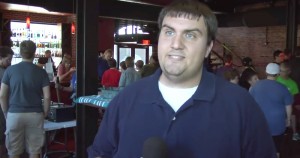
The Keweenaw Science and Engineering Festival (KSEF) is a four day event that brings learning and fun together for the whole family.
During Nerd Night, teenagers gathered at the Continental Fire Company in Houghton for hands-on activities hosted by Michigan Tech’s Physics Department.
MTU Laboratory Systems Associate Scott Rutterbush says that learning about science now will give these students a leg up in the future.
Read more and listen to audio clips at The Keweenaw Report.
The Keweenaw Report is sharing a video on Facebook which includes an interview with lab associate Scott Rutterbush.
The KSEF Facebook page is sharing another Nerd Night video.
Kids have fun, also learn at Nerd Night
HOUGHTON – From static electricity to inertia, area fifth- through 12th-graders got to see scientific principles brought to life through demonstrations at Nerd Night Wednesday.
Read more at the Mining Gazette, by Garrett Neese (subscription required).
Nerds are the new cool kids in the U.P.
Laboratory Systems Associate in MTU’s Physics Department Scott Rutterbush said, “The more we can expose these kids to that, the more base level of understanding they’ll have and the more we, at places like Michigan Tech, can do with them when they come into our program. It’s making them better engineers, making them better scientists.”
Read more and watch the video at ABC 10 News, by Rick Allen.
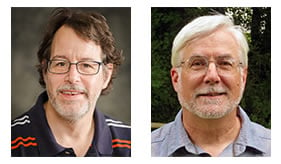 The Astronomical Society of the Pacific (ASP), one of the most innovative and respected astronomy science education organizations in the U.S., is proud to announce the recipients of its 2015 awards for excellence in astronomy research and education.
The Astronomical Society of the Pacific (ASP), one of the most innovative and respected astronomy science education organizations in the U.S., is proud to announce the recipients of its 2015 awards for excellence in astronomy research and education.
The awards will be formally presented at an ASP Awards Ceremony and Banquet on October 10, 2015 at Chabot Space and Science Center in Oakland, CA as part of ASP’s Annual Meeting and Public Festival (Universe 2015).
The Klumpke-Roberts Award for outstanding contributions to public understanding and appreciation of astronomy is awarded to Dr. Robert Nemiroff (left) and Dr. Jerry Bonnell (right) for their work on the Astronomy Picture of the Day. Dr. Robert Nemiroff is a Professor in the Physics department at Michigan Technological University. He is an active researcher, teaches undergraduate and graduate physics courses, and supervises graduate students. Dr. Jerry Bonnell is a research scientist with the University of Maryland Astronomy Department on contract to the Astrophysics Science Division at NASA’s Goddard Space Flight Center. They are the co-creators and co-editors of Astronomy Picture of the Day (APOD). Since 1995, they have selected and explained one image of our universe every day. Their explanations include links to additional information, deepening the educational value of the site. Each day’s image and explanation are archived, forming what is one of the largest annotated archives of diverse astronomy images on the web. APOD’s home site is hosted by NASA’s Goddard Space Flight Center and currently gets an average of 1 million hits per day. Its three major social media sites collectively have over 2 million followers. APOD is translated into 21 languages, including Arabic, Russian, Spanish, Indonesian, and Chinese, and has mirror sites in at least 23 countries.
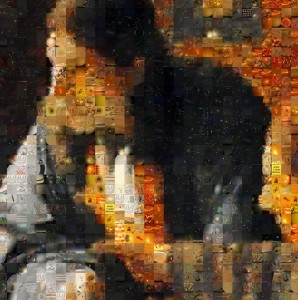 Astronomy Picture of the Day (APOD) was launched this day in 1995. The massively followed online site is maintained by APOD co-founders Robert Nemiroff and Jerry Bonnell.
Astronomy Picture of the Day (APOD) was launched this day in 1995. The massively followed online site is maintained by APOD co-founders Robert Nemiroff and Jerry Bonnell.
The 20th anniversary APOD image is a digital re-pixelation of a Vermeer using over 5,000 APOD images that have been featured on the site.
Nemiroff and Bonnell were interviewed by The Verge.
20 years of space photos: an oral history of Astronomy Picture of the Day
Exploring the cosmos one day at a time
APOD launched on June 16, 1995. In advance of its milestone birthday, I spoke on the phone with the two guys who have run the site by hand for two decades, a seemingly unfathomable task in the age of ephemeral content. How do they do it? A combination of Microsoft Word, a fiery passion for astrophotography, and lots and lots of emails.
So where did the idea originally come from?
Robert Nemiroff: Jerry Bonnell and I shared an office at NASA Goddard Space Flight Center, and we were both — we’re still — active researchers. But the web was growing up, and so we brainstormed to try to figure out how we could contribute to this web. One idea, we thought, was maybe we can make lots of money, and buy a Hawaiian island or something. But that never worked out. [Laughs.]